Abstract
The effect of repeated treatments with lead on hepatic cell proliferation was investigated in male Wistar rats. The animals were given intravenous injections of lead nitrate once every 10 days for 30 and 80 days. At the end of the experimental regimen, enlargement of the liver, accompanied by an increase in hepatic DNA content, was observed. A significant enhancement in the incorporation of labeled thymidine into hepatic DNA was found in lead-treated rats at the time intervals mentioned above, when compared with controls. An increase in the number of liver cells involved in mitosis was also observed in lead-treated animals. Analysis of serum glutamic-pyruvic transaminase and histologic observations did not show any sign of cell death at the time points examined. These results indicate that liver cells exposed to repeated treatments with lead undergo proliferation. However, a progressive reduction in the capacity of hepatic cells to divide was found in rats given repeated administrations of the metal, when compared with the extent of cell proliferation induced by a single dose of lead nitrate.
Full text
PDF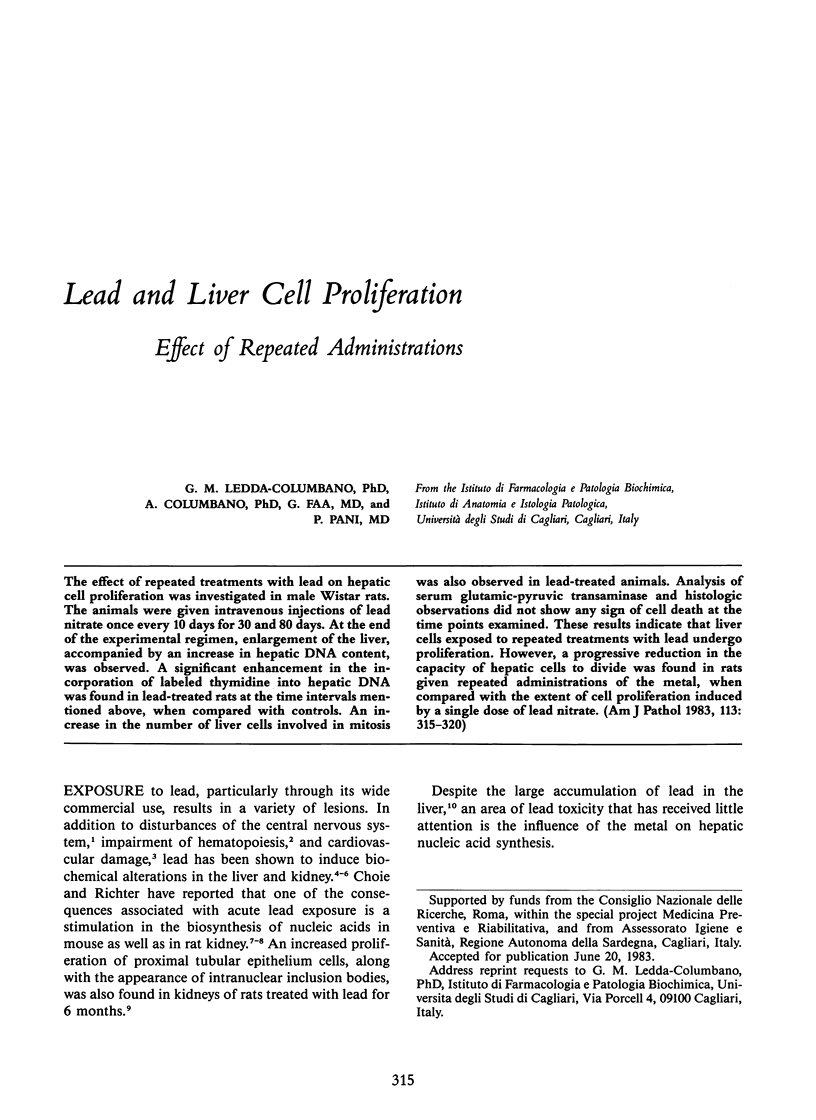
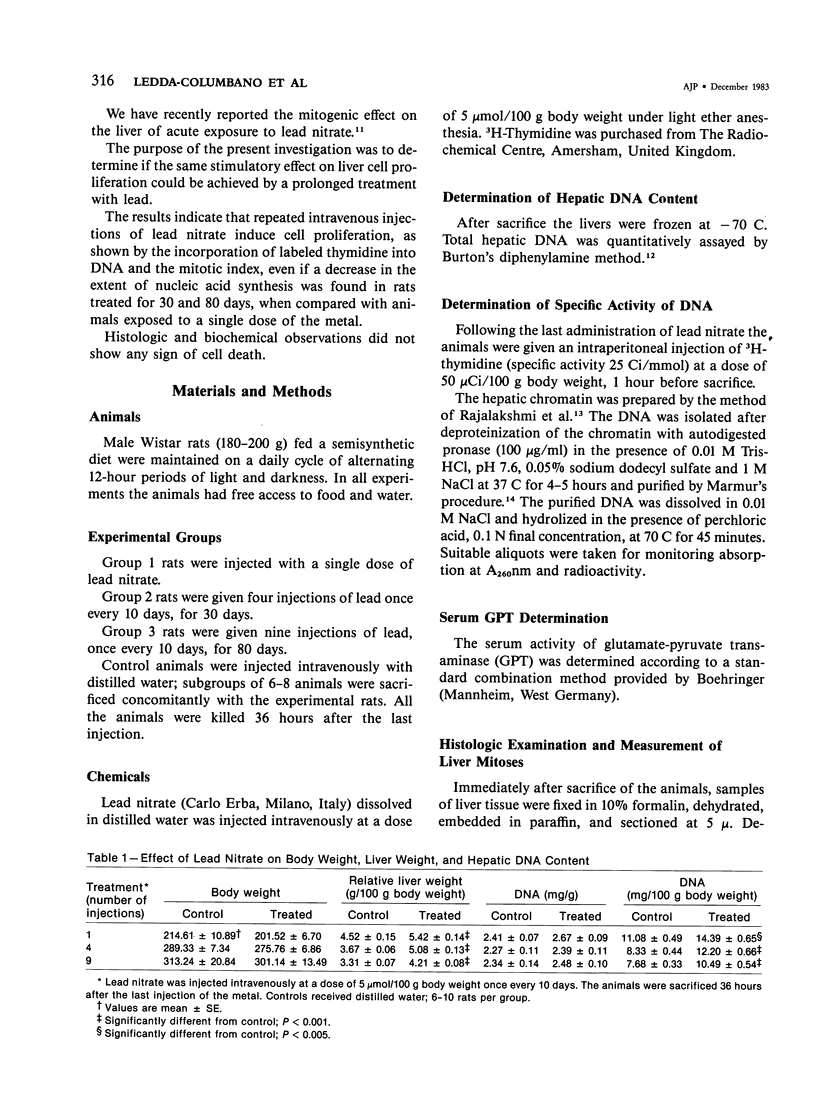
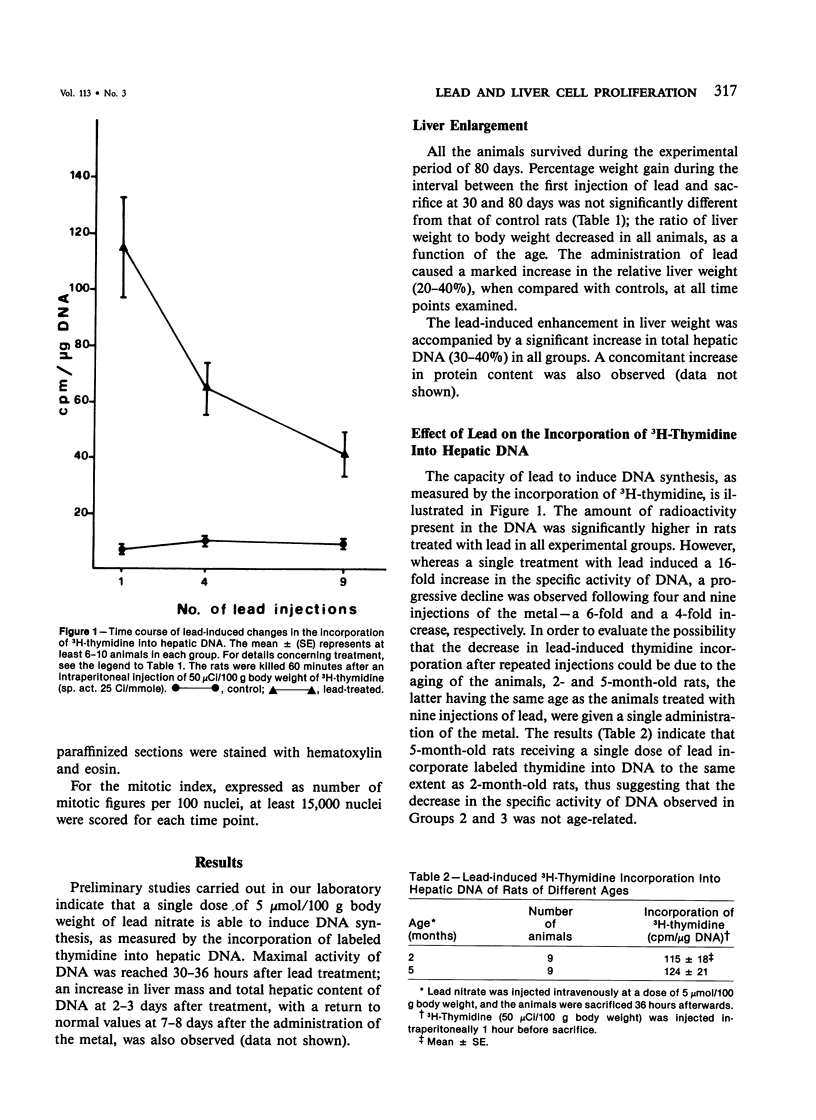
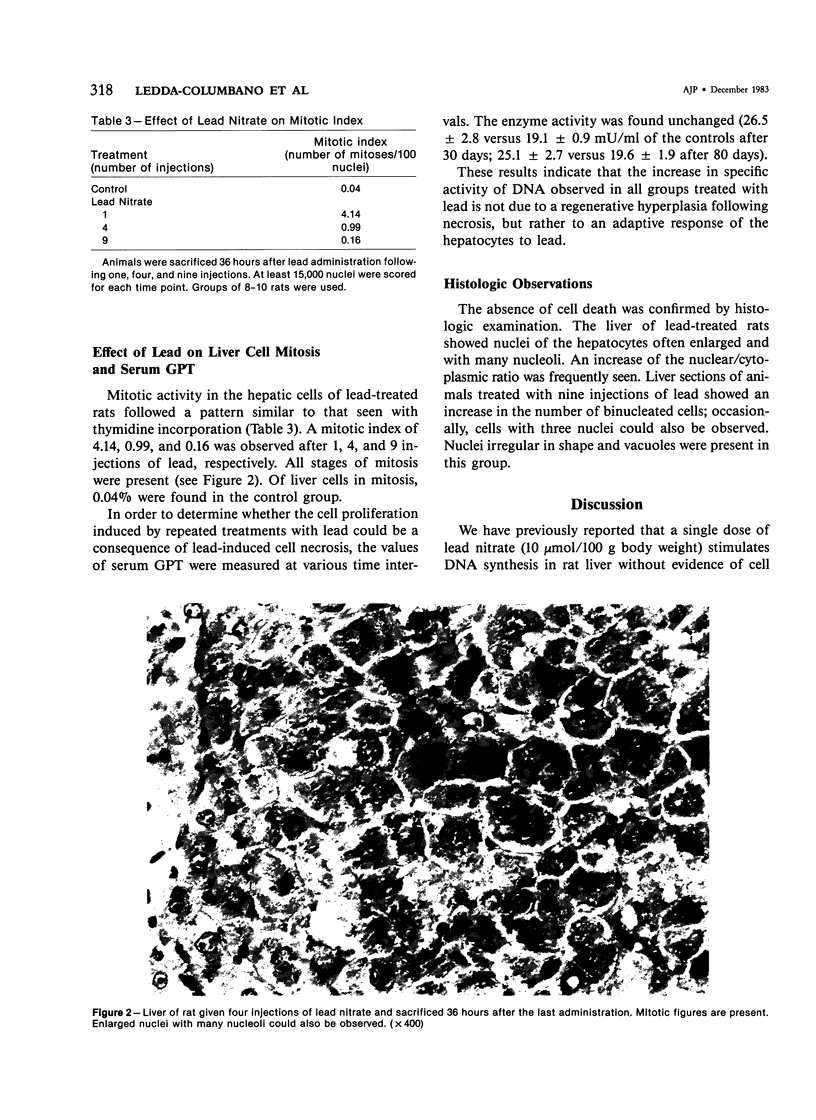
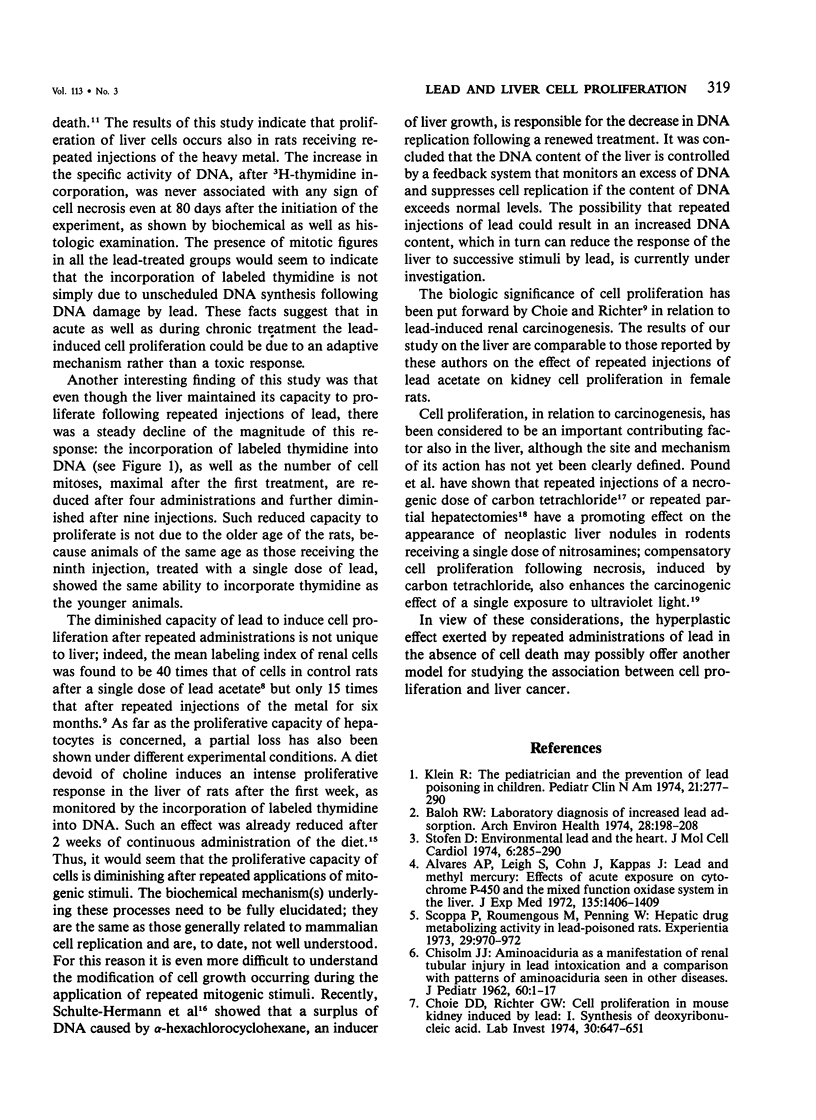
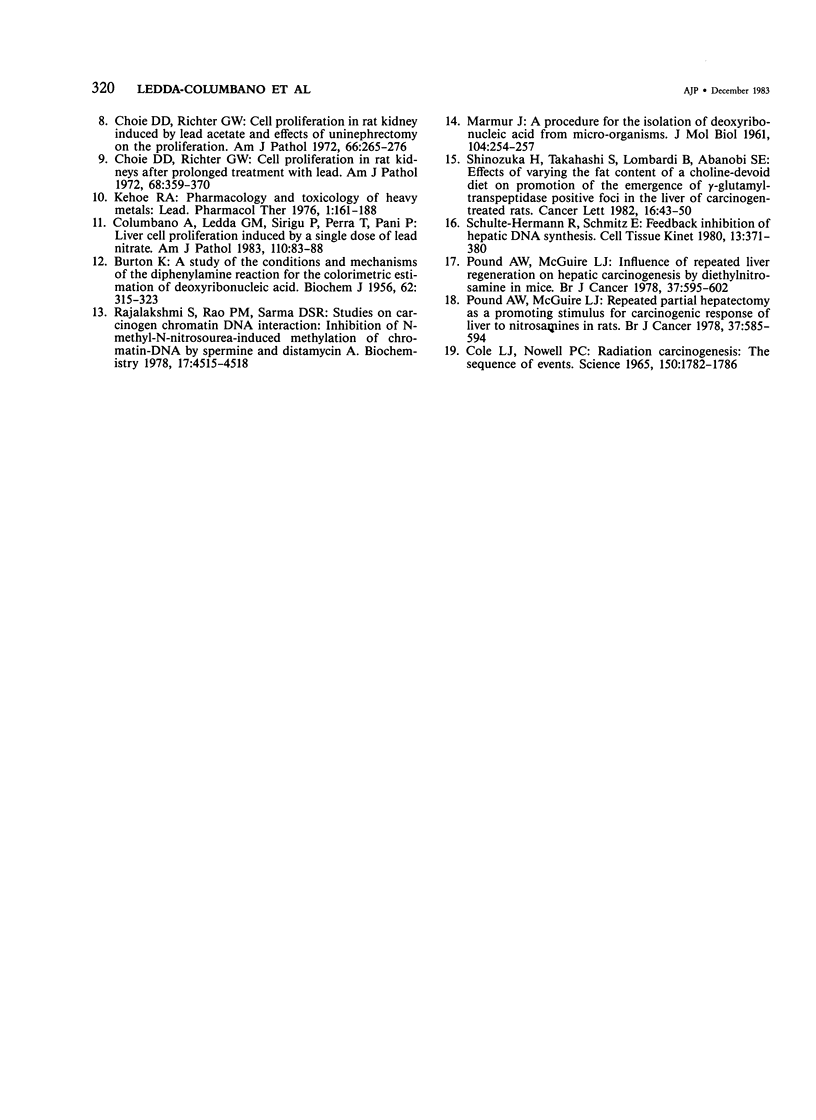
Images in this article
Selected References
These references are in PubMed. This may not be the complete list of references from this article.
- Alvares A. P., Leigh S., Cohn J., Kappas A. Lead and methyl mercury: effects of acute exposure on cytochrome P-450 and the mixed function oxidase system in the liver. J Exp Med. 1972 Jun 1;135(6):1406–1409. doi: 10.1084/jem.135.6.1406. [DOI] [PMC free article] [PubMed] [Google Scholar]
- BURTON K. A study of the conditions and mechanism of the diphenylamine reaction for the colorimetric estimation of deoxyribonucleic acid. Biochem J. 1956 Feb;62(2):315–323. doi: 10.1042/bj0620315. [DOI] [PMC free article] [PubMed] [Google Scholar]
- Baloh R. W. Laboratory diagnosis of increased lead absorption. Arch Environ Health. 1974 Apr;28(4):198–208. doi: 10.1080/00039896.1974.10666469. [DOI] [PubMed] [Google Scholar]
- CHISOLM J. J., Jr Aminoaciduria as a manifestation of renal tubular injury in lead intoxication and a comparison with patterns of aminoaciduria seen in other diseases. J Pediatr. 1962 Jan;60:1–17. doi: 10.1016/s0022-3476(62)80002-x. [DOI] [PubMed] [Google Scholar]
- Choie D. D., Richter G. W. Cell proliferation in mouse kidney induced by lead. I. Synthesis of deoxyribonucleic acid. Lab Invest. 1974 May;30(5):647–651. [PubMed] [Google Scholar]
- Choie D. D., Richter G. W. Cell proliferation in rat kidney induced by lead acetate and effects of uninephrectomy on the proliferation. Am J Pathol. 1972 Feb;66(2):265–275. [PMC free article] [PubMed] [Google Scholar]
- Choie D. D., Richter G. W. Cell proliferation in rat kidneys after prolonged treatment with lead. Am J Pathol. 1972 Aug;68(2):359–370. [PMC free article] [PubMed] [Google Scholar]
- Cole L. J., Nowell P. C. Radiation carcinogenesis: the sequence of events. Science. 1965 Dec 31;150(3705):1782–1786. doi: 10.1126/science.150.3705.1782. [DOI] [PubMed] [Google Scholar]
- Columbano A., Ledda G. M., Sirigu P., Perra T., Pani P. Liver cell proliferation induced by a single dose of lead nitrate. Am J Pathol. 1983 Jan;110(1):83–88. [PMC free article] [PubMed] [Google Scholar]
- Klein R. The pediatrician and the prevention of lead poisoning in children. Pediatr Clin North Am. 1974 May;21(2):277–290. doi: 10.1016/s0031-3955(16)32989-3. [DOI] [PubMed] [Google Scholar]
- Poound A. W., McGuire L. J. Influence of repeated liver regeneration on hepatic carcinogenesis by diethylnitrosamine in mice. Br J Cancer. 1978 Apr;37(4):595–602. doi: 10.1038/bjc.1978.89. [DOI] [PMC free article] [PubMed] [Google Scholar]
- Pound A. W., McGuire L. J. Repeated partial hepatectomy as a promoting stimulus for carcinogenic response of liver to nitrosamines in rats. Br J Cancer. 1978 Apr;37(4):585–594. doi: 10.1038/bjc.1978.88. [DOI] [PMC free article] [PubMed] [Google Scholar]
- Rajalakshmi S., Rao P. M., Sarma D. S. Studies on carcinogen chromatin--DNA interaction: inhibition of N-methyl-N-nitrosourea-induced methylation of chromatin--DNA by spermine and distamycin A. Biochemistry. 1978 Oct 17;17(21):4515–4518. doi: 10.1021/bi00614a024. [DOI] [PubMed] [Google Scholar]
- Schulte-Hermann R., Schmitz E. Feedback inhibition of hepatic DNA synthesis. Cell Tissue Kinet. 1980 Jul;13(4):371–380. doi: 10.1111/j.1365-2184.1980.tb00476.x. [DOI] [PubMed] [Google Scholar]
- Scoppa P., Roumengous M., Penning W. Hepatic drug metabolizing activity in lead-poisoned rats. Experientia. 1973 Aug 15;29(8):970–972. doi: 10.1007/BF01930408. [DOI] [PubMed] [Google Scholar]
- Shinozuka H., Takahashi S., Lombardi B., Abanobi S. E. Effects of varying the fat content of a choline-devoid diet on promotion of the emergence of gamma-glutamyl-transpeptidase positive foci in the liver carcinogen-treated rats. Cancer Lett. 1982 May-Jun;16(1):43–50. doi: 10.1016/0304-3835(82)90089-1. [DOI] [PubMed] [Google Scholar]
- Stöfen D. Letter: Environmental lead and the heart. J Mol Cell Cardiol. 1974 Jun;6(3):285–290. doi: 10.1016/0022-2828(74)90059-5. [DOI] [PubMed] [Google Scholar]



